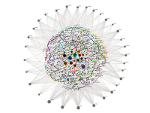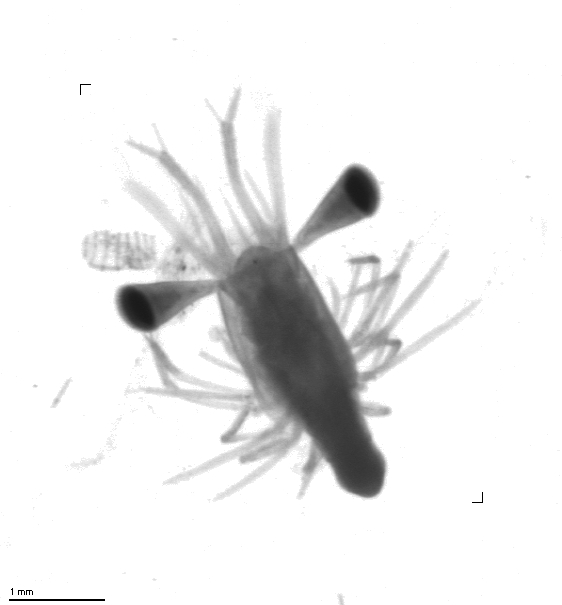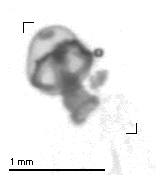 Outreach
Outreach
OUTREACH
Characterizing and mapping larval dispersal in the ocean, a new tool to conserve and to manage marine ecosystems
Researchers from the Institute for Cross-Disciplinary Physics and Complex Systems (IFISC, UIB-CSIC), in collaboration with French scientists, revealed for the first time basin-scale larval dispersal patterns in the Mediterranean Sea. The international journal Global Ecology and Biogeography publishes the results of this study1 based on a novel approach that could become fundamental for the protection and management of marine ecosystems. This research emanates from previous papers2,3 that developed the “Lagrangian Flow Network” methodology. This inter-disciplinary framework uses concepts from Network Theory and Complex Systems to characterize oceanic transport and to explore issues related to Oceanography and Marine Ecology.
Marine connectivity, defined as the processes by which distinct marine subpopulations exchange individuals among them, is a crucial concept in Ecology. These exchanges occur at all stages of the species life cycle, but the most important mechanism is thought to be the transport of larvae and eggs by ocean currents over long distances. This connectivity, very difficult to evaluate, has clear consequences for the structuring of marine populations and thus for their protection. Several approaches are used to infer the structure of marine populations, such as associating individuals of different groups based on their genetic similarities or revealing geographical connections resulting from ocean currents. Previous theoretical work and dedicated localized studies suggested the existence of areas/subpopulations which tend to preferentially retain their larvae or to export/import larvae from/to elsewhere. This study allows their systematic identification providing simultaneously qualitative and quantitative connectivity indices.
To do this, the researchers considered various bio-physical factors such as the pelagic larval duration, the spawning season, the chaotic oceanic circulation and the bathymetry. They used the “Lagrangian Flow Network” to model surface dispersal by multi-scale ocean currents over the last 10 years, dividing the Mediterranean basin in thousands of small sub-areas and computing millions of trajectories simulating the transport of free-swimming larvae among those regions. Hundreds of experiments were performed by combining different parameters which allows studying marine connectivity from an “ecosystem perspective”, with special relevance for species with wide geographical distribution and potential for large-distance dispersal.
Results:
These maps revealed contrasting patterns of larval retention, with highest retention rates along coastlines (both continental and insular ones) as well as over extended continental margins. Some regions show relatively stable behavior all year long, while others have marked seasonality associated with the variability of the circulation. For instance, in summer the Balearic Sea acts as a basin of attraction of larvae from various origins, which then may accumulate nearshore potentially favoring local biodiversity. In contrast during the wintertime, the Balearic Sea tends to behave as a source of larvae emitting them toward both the northern and southern regions of the western basin.
This study allows characterizing each sub-region of the Mediterranean by its capacity to both retain and exchange larvae with the neighboring areas. For instance, the northern Catalan coastline tends to have low retention while exporting its larvae further south. In contrast, the continental margin of the Ebro delta receives larvae from upstream sites, including from the Catalan shores and the Gulf of Lion, and then retain them quite efficiently.
These connectivity maps are very valuable to formulate improved hypotheses of population structures and gene flow patterns and to design accordingly the sampling strategy of population genetics studies. In addition, the extents to which marine subpopulations exchange individuals among them and retain their own offspring have implications for their demography and persistence (long-term survival), two crucial concepts for their management and conservation. These connectivity indices and their integrated analyses could become, from now on, a key tool to design marine reserves and to manage exploited species.
IFISC researchers are involved in different collaborations to deepen our understanding of marine connectivity. In particular, the project “HydroGenConnect” gathers geneticists and marine reserve stakeholders to compare the different approaches studying connectivity and to improve its consideration into conservation plans. Another collaborative project with researchers from the “Instituto Oceanográfico Español” in Mallorca aims at evaluating the consequences of these connectivity processes for the management of harvested species.
References:
1Dubois, Rossi, Ser-Giacomi, Arnaud-Haond, López and Hernández-García, 2016. Linking basin-scale connectivity, oceanography and population dynamics for the conservation and management of marine ecosystems, Global Ecology and Biogeography, in press, doi:10.1111/geb.12431.
2Rossi, Ser-Giacomi, Lopez and Hernandez-Garcia, 2014. Hydrodynamic provinces and oceanic connectivity from a transport network help designing marine reserves, Geophysical Research Letters, 41 (8), 2883–2891, doi:10.1002/2014GL059540
3Ser-Giacomi, Rossi, Lopez and Hernandez-Garcia, 2015. Flow networks: A characterization of geophysical fluid transport, Chaos: An Interdisciplinary Journal of Nonlinear Science, 25 (3), 036404, doi:10.1063/1.4908231.
Contacts:
Gemma Casabo, communication advisor: +34 971 259 719 / [email protected]
Vincent Rossi, investigator: +34 971 259 830 / [email protected]














